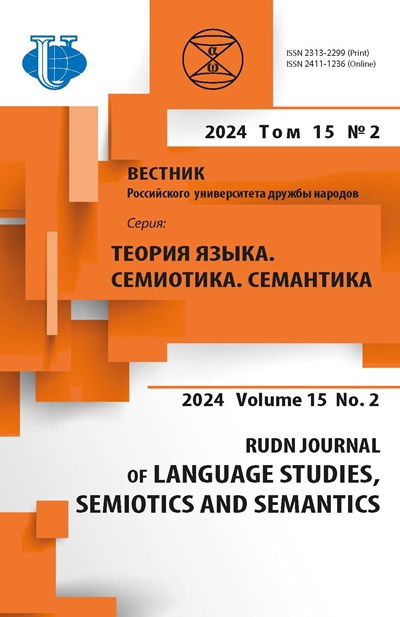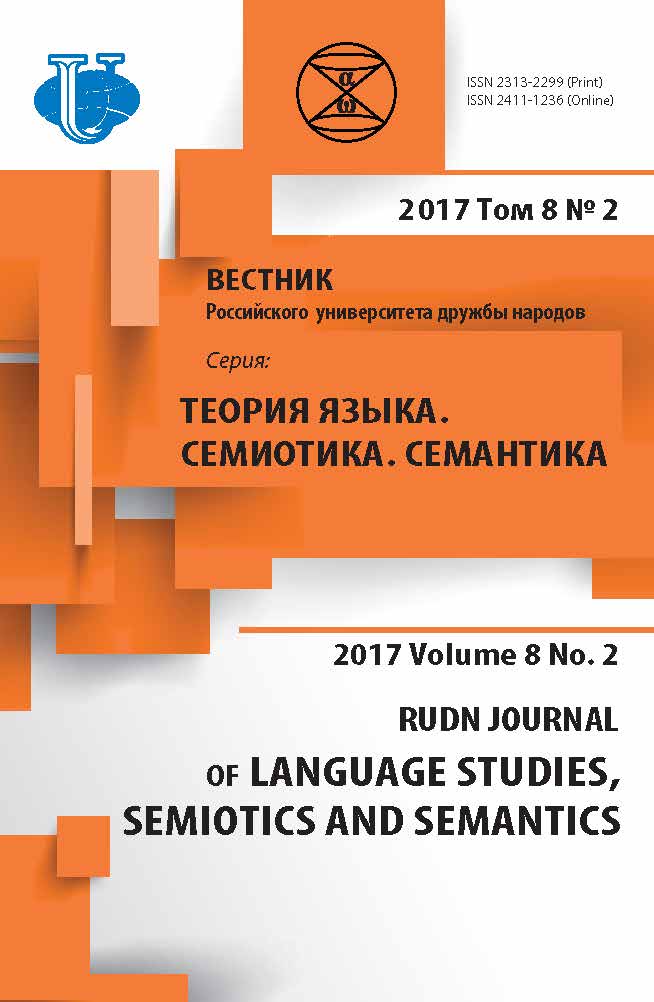О некоторых факторах переводной множественности
- Авторы: Филиппова И.Н.1
-
Учреждения:
- Московский государственный областной университет
- Выпуск: Том 8, № 2 (2017)
- Страницы: 241-248
- Раздел: Статьи
- URL: https://journals.rudn.ru/semiotics-semantics/article/view/16332
- DOI: https://doi.org/10.22363/2313-2299-2017-8-2-241-248
Цитировать
Полный текст
Аннотация
В статье подвергается анализу взаимосвязь политкорректности немецкой и английской лингвокультур с феноменом переводной множественности. Отмечено национально-лингвистическое различие гендерной политкорректности, реализуемой в английском языке как феминизация, андрогинизация и нивелирование гендерных маркеров, от стратегии прецизирования гендерного статуса в немецком языке. Сопоставление этих тенденций с современным русским языком приводит к выдвижению и обоснованию тезиса о неизбежности множественности перевода (как текста). Показаны возникающие при взаимодействии английского, немецкого и русского языков (в различных комбинациях) нетождественные варианты текстов перевода. Выявлены факультативный характер текстовых преобразований в одноязычной коммуникации и негативные последствия эвфемизации расовых отличий и маркеров физиологической неполноценности в области межкультурных и межъязыковых контактов при передаче художественной литературы: нарушение авторского стиля, девальвация сюжетной линии, дискредитация авторского текста.
Об авторах
Ирина Николаевна Филиппова
Московский государственный областной университет
Автор, ответственный за переписку.
Email: inf.perevod@gmail.com
105005, г. Москва, ул. Радио, д. 10а, Российская Федерация
Список литературы
- Merkel: „Eine Schwäche von mir ist Schreien“. Режим доступа: http://www.dw.de/merkel-eine-schwäche-von-mir-ist-schreien/a-1456085. Дата обращения: 21.01.2017.
- Weihnachtsansprache 2009 von Bundespräsident Horst Köhler. Режим доступа: http://www.bundespraesident.de/SharedDocs/Reden/DE/Horst-Koehler/Reden/2009/12/ 20091225_Rede.html. Дата обращения: 21.01.2017.
- Beutler M. Der Kanzler und die Kanzlerin. Режим доступа: http://www.dw.de/der-kanzler-und-die-kanzlerin/a-6084121 Дата обращения: 21.01.2017.
- Астафурова Т.Н., Олянич А.В. Лингвосемиотика нейтрализации социальных фобий // Вестник Волгоградского государственного университета. Серия 2: Языкознание. 2012. № 1. С. 86-92.
- Вековищева С.Н. Факторы, влияющие на успешность акта речевой коммуникации в ситуации двуязычного общения // Перевод и когнитология в XXI веке. Москва: МГОУ, 2011. С. 85-87.
- Вековищева С.Н. Интерпретация современного художественного текста с точки зрения семантико-временной отнесенности // Проблемы теории языка и переводоведения. Москва: МГОУ, 2012. С. 4-11.
- Лысенкова Е.Л., Чайковский Р.Р. Художественный перевод в контексте пространства и времени // Вестник Иркутского государственного лингвистического университета. 2012. № 2 (18). С. 147-156.
- Максименко О.И. Адаптированный перевод: за и против // Язык в пространстве коммуникации и культуры. Москва: Книга и бизнес, 2012. С. 481-490.
- Нелюбин Л.Л. Введение в технику перевода. Москва: МГОУ, 2005.
- Нелюбин Л.Л. Сравнительная типология английского и русского, немецкого и русского, французского и русского языков. Москва: МГОУ, 2007.
- Филиппова И.Н. Избыточность и недостаточность в одноязычной и двуязычной коммуникации (на материале немецкого и русского языков): автореф. дисс.. д-ра филол. наук. Московский гос. областной университет. Москва, 2015.
- Филиппова И.Н. Трансцендентальный характер перевода // Современные проблемы науки и образования. 2014. № 2. Режим доступа: http://www.science-education.ru/116-12025. Дата обращения: 22.01.2017.
- Хроменков П.Н. Конфликтогенез в дискурсе идеологий нового времени // Новое в переводоведении и лингвистике. 2012. С. 147-153.













